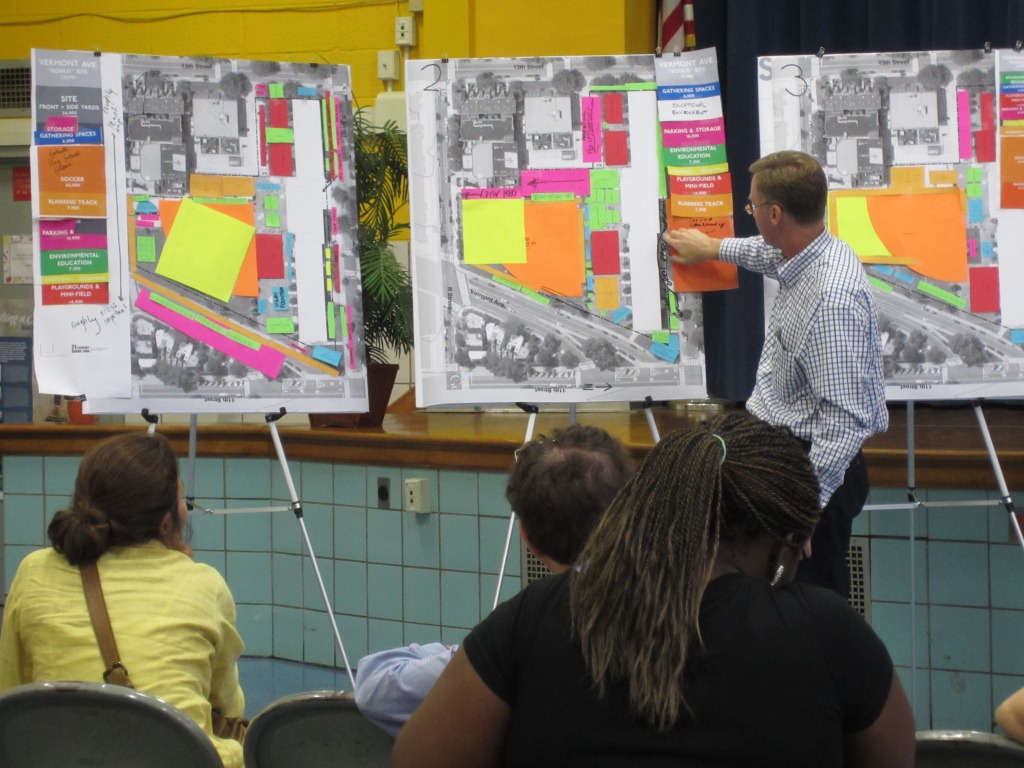Educational Facilities Master Planning
How a long-term vision helps to align people and resources.
“Planning is a purposeful activity that helps achieve something. Planning can be defined as the ordering of resources and events to achieve an agreed upon objective….Without planning, nothing is accomplished, unless by accident. Organizations could not successfully pursue a goal without some sort of planning” (Earthman (2019), pg 11).
An Educational Facility Master Plan is a formal document, created by district leaders and community members, that inventories the district’s real estate holdings, identifies its capital investment needs, and outlines an improvement strategy that accounts for every school and facility where students are served. Typically, a master plan looks 10 years ahead, projecting where and when space will be needed. It may include elements of site selection and acquisition; new construction or expansion of sites; boundary adjustments, reconfigurations, and joint use or co-location opportunities; or potential closures or consolidations. Plans also include a justification, scope, schedule and estimated cost for major repairs and modernization projects.
Take-Aways
- Districts that commit themselves to a planning process driven by best practice deliver better, more equitable facilities and higher value for public spending. Facilities plans are useful for all school districts, from the smallest to the largest, and whether enrollment is growing, declining, or holding stable.
- Methodical planning allows districts to deliver improvements with the most value for the least cost. A planning process adds fractional expense to a district’s budget but can profoundly affect its success in the maintenance, operation, and long-term management of its facilities.
- When facilities plans are developed in partnership with school and community stakeholders, districts often discover innovative ways to meet their building and program needs. Inclusive planning that fosters community engagement builds the district’s social capital and can catalyze broader participation in school activities.
- Planning is most effective when informed by clear standards, unambiguous mandates, and meaningful guidance from state agencies and other providers.
Deep Dives
Planning Educational Facilities: What Educators Need to Know
This book covers the entire planning process educators must employ to adequately administer the planning process for a new or renovated school building. The structure of the book is to follow a sequential planning process for a new school building or renovation project from the beginning of a need for a new school to the final evaluation of the planning product and planning process. In addition to complete chapters describing each planning process, there are auxiliary chapters devoted to topics important to the planning process such as Green Schools, Critical Issues, and Safe Buildings. A unique chapter is the last one dealing with Problem-Based Learning. In this chapter problems from actual experience in the field are presented to students for consideration and discussion.
Tools
Critical Facilities Planning for K-12 Districts [Videos]
Describes five facilities plans that every district should develop and regularly update: an educational facilities master plan; a capital plan; a maintenance plan; an energy & environmental plan; and a safety & emergency operations plan.
Related videos in the same series include:
- Educational Facilities Master Plan [Video]
- Describes the importance and value of a K-12 school district facilities master planning and outlines best practices, including research and stakeholder engagement.
- Educational Specifications [Video]
- Describes the value of basing K–12 facilities design and construction on educational specifications developed by identifying end‐user requirements and by engaging stakeholders.
- Capital Improvement Plan [Video]
- Describes the importance of a capital plan for setting equitable priorities and efficiently allocating critical resources.
- K-12 Safety & Emergency-Operations Plan [Video]
- Describes the importance of a K-12 school district safety & emergency operations plan and outlines best practices.
- School Facilities Maintenance Plan [Video]
- Describes the value of a district‐wide facilities maintenance plan and outlines best practices for routine and preventive maintenance.
- Energy & Environmental Management Plan [Video]
- Describes the utility of a district energy & environmental management plan in finding efficiencies, restraining costs, and providing safe and healthy environments for students and staff.
PK-12 Public Educational Facilities Master Plan Guide
Provides a rubric to guide development or evaluation of a facility master plan, applying best practice standards.
Public School Capital Outlay Council Facility Master Plan Components and Guidelines
Example of State guidelines for local facility planning. Includes a customizable planning tool.


